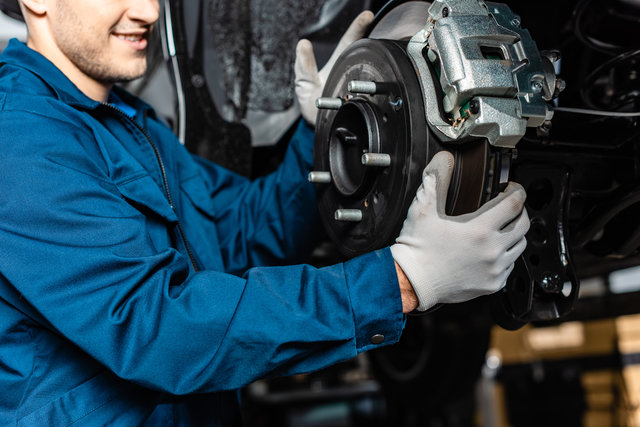October 01 2024
The Ford Maverick LoboThe Ford Maverick Lobo is the all-new street-performance version of the popular Ford Maverick,...

Your vehicle’s brakes assist to control your vehicle, reduce speed and bring it to a complete stop – a critical safety element.
Brakes use a hydraulic system: applying pressure to the brake pedal sends brake fluid throughout the system – activating parts that come together to create friction and creating the required stopping force. Any weak or worn points (hoses, seals or other hydraulic components) could result in a fluid leak or a catastrophic brake failure.
Brake fluid is a highly specialized liquid designed to operate under high pressure and in all types of temperatures. The constant heating/cooling causes water (or condensation) form, reducing its boiling point which can lead damage if not cleaned regularly. The build up can cause a spongy feel in the brake pedal and can cause damage to other braking components. The recommended brake fluid flush removes water and other contaminants to keep your car running smoothly.
Inspections include, but are not limited to:
Regular brake service will help avoid more expensive repairs down the line, so don't skip it! Even though you may think that your brakes are working just fine - an inspection could reveal potential problems which could have been solved before costly damage occurs. Our Ford-trained technicians complete both a visual and hands-on analysis.
Upon inspection of your vehicle, we may have determined your brake pads are “in the red” as indicated on your Vehicle Report Card.
WHAT DOES THIS MEAN? Brake pads that are found to be “in the red” (< 3mm in thickness) require immediate attention. Worn brakes may:
Ask us how to get your brakes into the GREEN.
Squealing/squeaking?
Some squeaks may be normal, however they may become loud or more frequent
Pads or shoes are glazed or wearing out and need to be replaced.
Grinding
Grinding sensation or sound when touching the brake pedal
Grab
The brakes grab at the slightest pressure?
There is a problem with contaminated brake linings, or a loose or broken component
Low or fading pedal
Brake pedal needs to be pressed hard to stop the vehicle?
Pulling
Vehicle pulls to one side when braking?
• Pads are cracked and need to be replaced
• Rotors are pitted and need to be machined or replaced
Pulsation
Brake pedal or steering wheel vibrates when braking ?
*Expert Tip - If the rotors or drums have been identified as being “in the yellow” (drums – 1-2 mm; rotors 3-5 mm lining remaining), consider changing them with your brake pads. Because your vehicle is already on the hoist, you save time and labor costs by doing them at the same time.
Other Articles That May Interest You
October 01 2024
The Ford Maverick LoboThe Ford Maverick Lobo is the all-new street-performance version of the popular Ford Maverick,...
September 05 2024
Quick Service, Maintenance & Oil ChangesOil Change, Lubrication and Other Fluids Oil is a vital component in the life of your vehicle's...
February 02 2024
The Ford Lightning F-150 Electric VehicleAs we look toward the future, we are stepping into the conversations around electric vehicles...